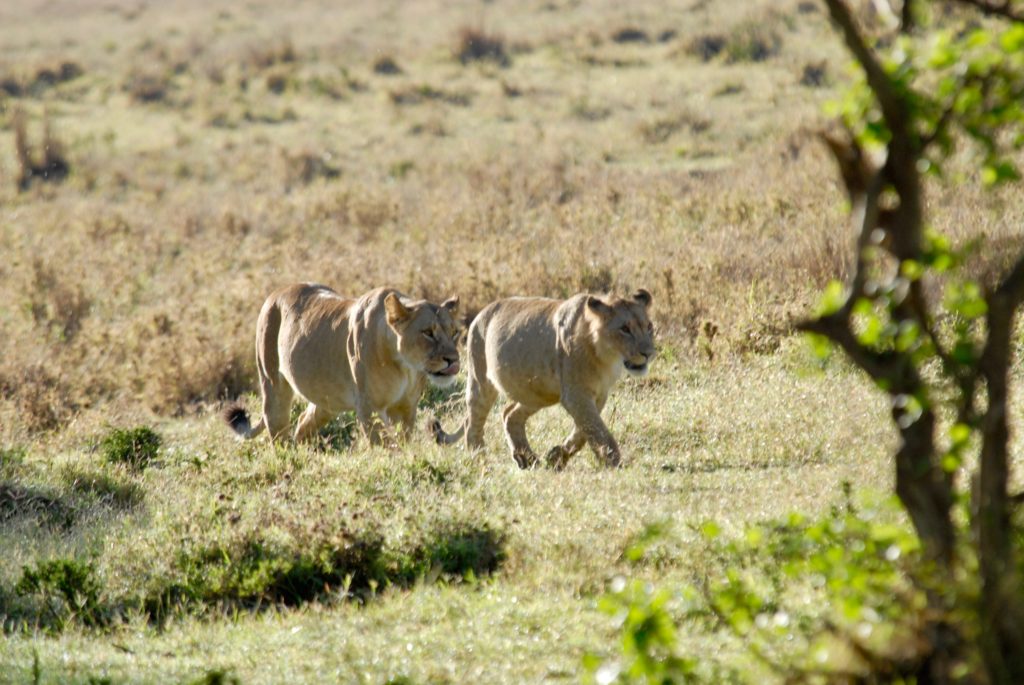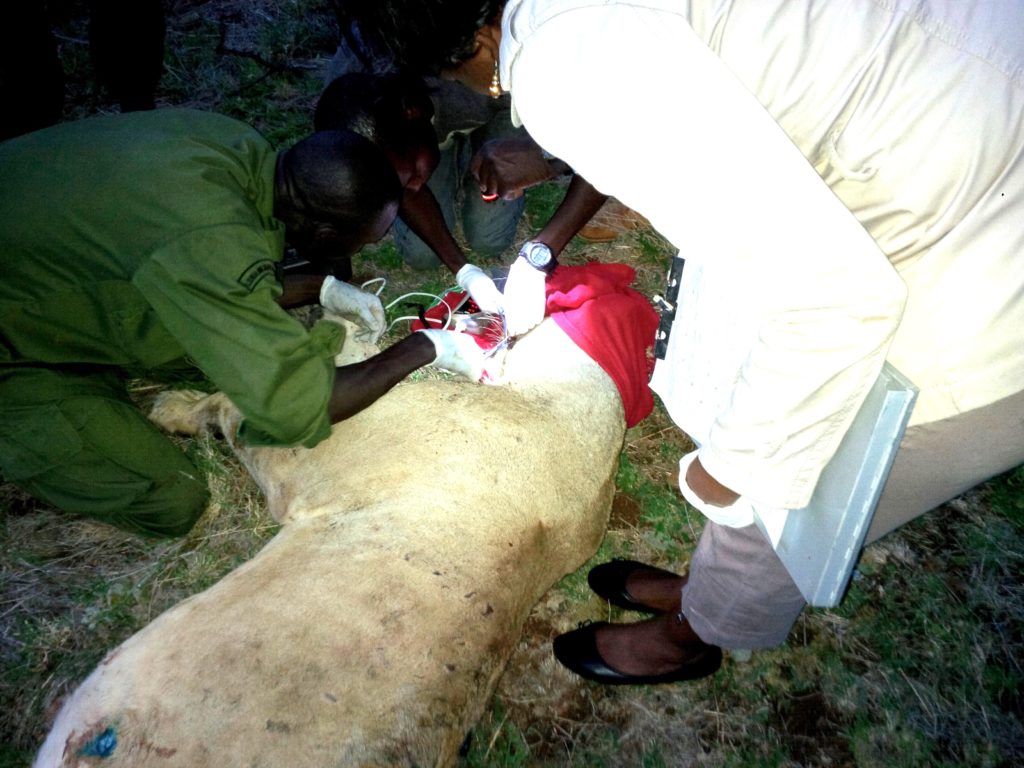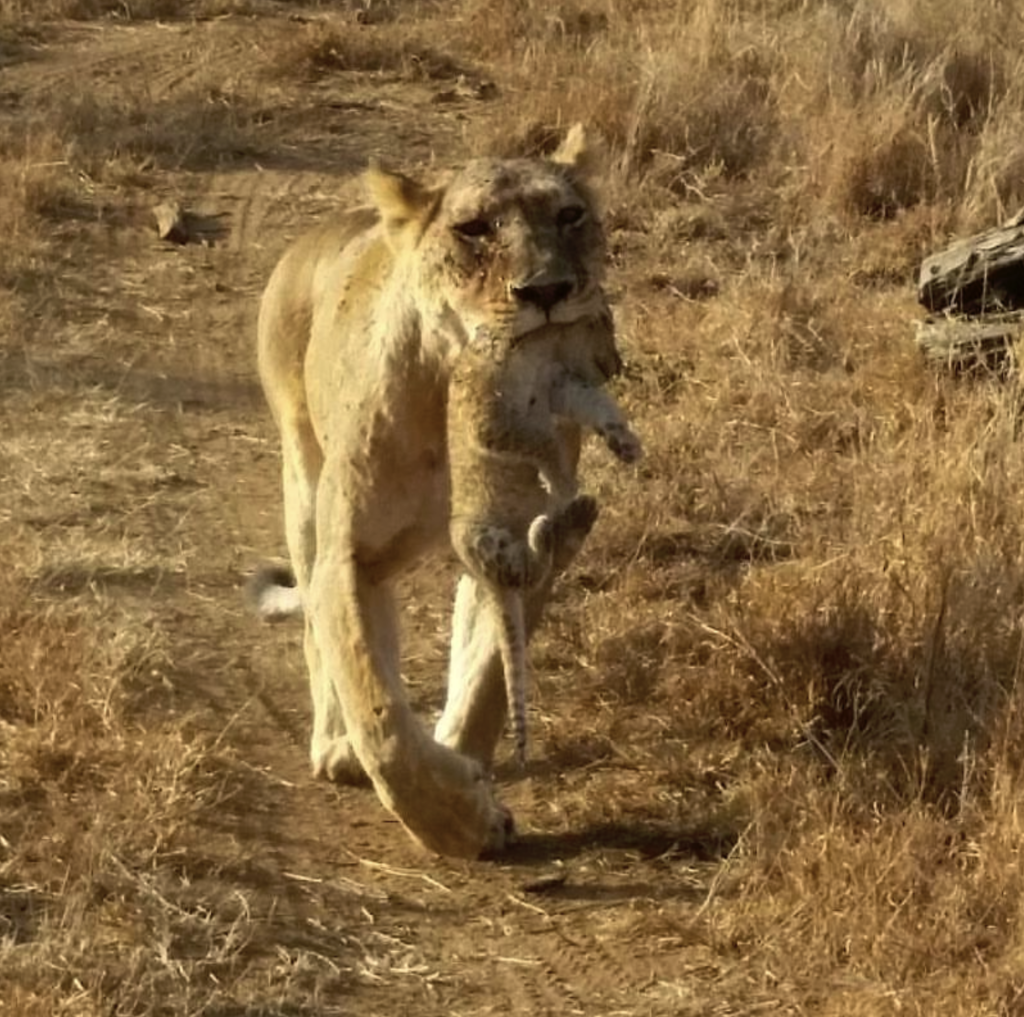Guy Pfeffermann, on Lewa Conservancy, 2019.
Nestled north of Mount Kenya, Lewa Conservancy is a model of its kind. Most famously, its efforts these past twenty years brought the black rhino population back from near-extinction to over eighty individuals.
On one of our daily range drives Irene and I came across two lions, who didn’t pay any attention to our Toyota vehicle.

That night the most frightful roars echoed across Lewa. Next afternoon we met a lioness slowly advancing up a path, perhaps one of the pair. Pregnant, she had been wounded fighting another lion.
Joseph Kirui, our guide and driver, phoned for help, then kept track of the lioness. Soon two vehicles converged on one of the rare flat surfaces on the chaotically rugged hillside: the Mobile Vet Unit and a couple of rangers. Thanks in part to support by the Pettus Crowe Foundation these past few years, Dr. Matthew Mutinda, one of Kenya’s handful of wildlife veterinarians, has been serving Lewa and some nearby wilderness areas. He trains Kenyan and foreign interns who assist and learn from him. Anesthetized by a dart, the patient was lying on its side. The injuries were worse than we had suspected: a deep gash in the jaw and gaping wounds on her thighs. The team set to work in military fashion, the rangers stood above guarding us from predators.
Night fell. Operations went on in moonlight.

The last stitch firmly tied, wrapped in blankets we waited in our vehicles for the patient to wake. An hour went by, then two. Eventually, slowly she moved a paw, then by a huge effort tried to sit up and sank again; eventually she managed to stand up only to settle down in what Dr. Mutinda said was her normal resting position.
Joseph drove us home in total darkness down precipitous drops, bumping over boulders, skirting acacia trees and keeping the vehicle from tilting over the edge of narrow ledges.
Next day the lioness was seen sleeping on a rock.
And here she is, two months later, carrying her cub. What joy!

